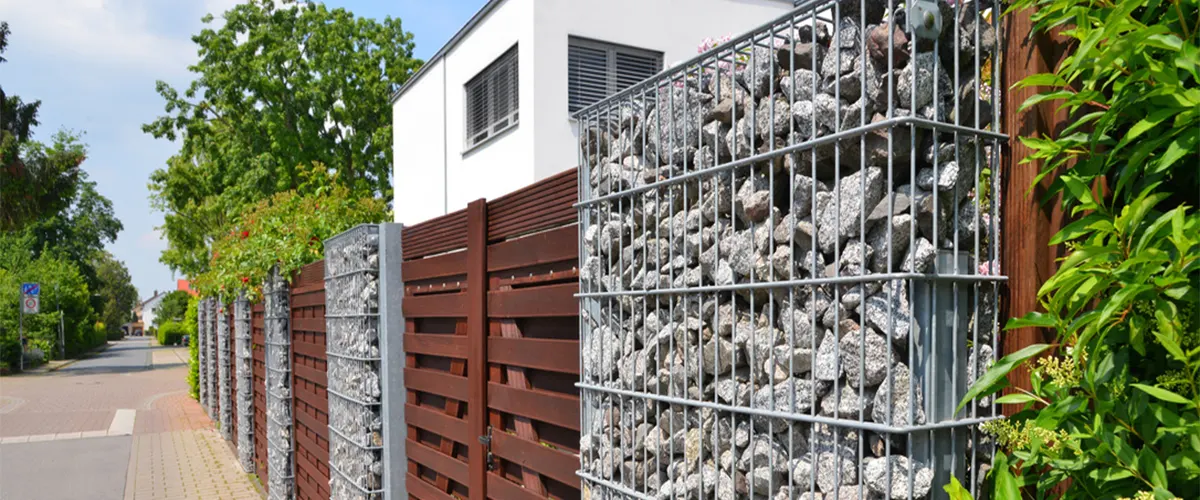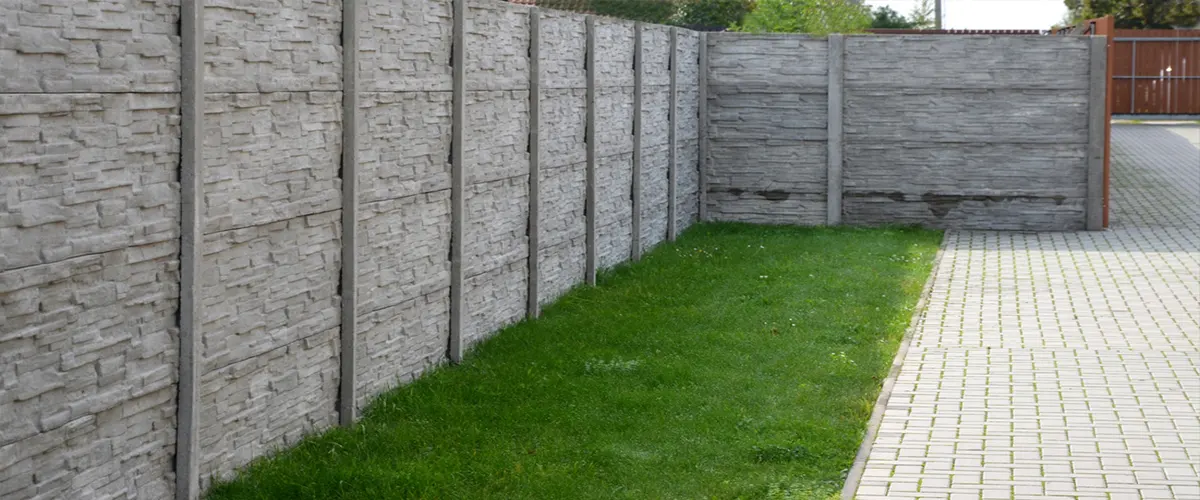When it comes to fencing options, homeowners have a lot of choices. There are traditional wood fences, metal fences, and even chain-link fences.
But if you’re looking for something that is both unique and stylish, consider stone fencing. Stone fences come in two main varieties: gabion fence and faux stone fence. Both have their pros and cons, which we’ll discuss in this blog post.
So let’s take a closer look.
1. The Pros And Cons Of Gabion Fencing
According to one study, gabion fences are reinforced structures that resist most type of tresses. They are made of stones that are placed in a wire mesh container. They are usually around 3 to 4 feet high and can be used to enclose properties or to mark boundaries.
Gabion fences are strong and durable, and they can last for many years with minimal maintenance. They are also relatively affordable, especially when compared to other types of fencing materials such as wood or metal.

However, gabion fences do have some drawbacks. Firstly, they can be quite heavy, so they may not be suitable for all properties.
They also require regular checking and cleaning to ensure that the stones do not become clogged with dirt and debris. dark brown granite
2. The Pros And Cons Of Faux Stone Fencing
Faux stone fences are made by combining cement, color pigment, sand, water, and wire mesh. The mixture is then poured into a mold for the desired shape of the fence. This material can be molded into almost any shape or size to mimic a realistic stone appearance.
The fence panels come in multiple styles and colors like dark brown granite or gray granite. As this type of fencing material is lightweight, it can be easily installed by one person without the need for heavy machinery.

However, unlike natural stones, faux stone fences are not porous and will not absorb water over time. As a result, they can crack quite easily if too much weight is placed on them.
The material will also be prone to fading and chipping, and it can become brittle in colder climates.
3. The Cost Of Each Type Of Fence
The cost of a gabion fence varies depending on the size and complexity of the project. However, on average, a gabion fence costs around $25 per square foot.
Faux stone fences are more expensive than gabion fences, with an average cost of $50 per square foot. This is largely due to the cost of the materials and the labor involved in the installation.
When deciding between the two, you’ll need to look at things such as your budget, your available space, and the style of fence that best suits your property.
5. The Installation Process
Gabion
Installing a gabion fence is a relatively easy process that can be done by one person. The first step is to measure the area that you want to fence off and then purchase the necessary materials.
Next, use wire cutters to cut the mesh container to the desired size. Then, fill the container with stones of your choice. Make sure that the stones are tightly packed together to prevent gaps between them.
Faux Stone
If you’re installing a simulated stone fence, follow the same steps, but make sure that you mix the cement and water according to the instructions provided.
Pour the mixture into a mold and wait for it to dry before installing the fence.
6. Maintenance
Both gabion fences and faux stone fences require regular maintenance to keep them looking their best. For gabion fences, you’ll need to check the stones regularly for dirt and debris and use a brush or hose to clean them. You may also need to re-pack the stones every few years to keep them in place.
Faux stone fences should be cleaned with a damp cloth to remove any dirt or dust. Do not use any harsh chemicals or cleaning products, as these can damage the material. Fences made from faux stone may need re-coating with paint or polyurethane every few years to maintain their appearance.
7. Which Material Is Best?
Both gabion and faux stone fences can be great choices for enclosing your yard or garden, and they each have their pros and cons. As such, there is no clear winner between the two types of fencing material. It all comes down to personal preference and your individual needs as a homeowner.
However, as a simulated stone fence requires regular maintenance and may not withstand all weather conditions, natural stone gabion walls are a better choice. Keep in mind though that natural stone can be more costly than faux stone and may require professional assistance for installation.
Despite these drawbacks, the durability of natural stones makes them worth the extra cost for many people.
Frequently Asked Questions
Gabion fences are sturdy and can withstand a lot of weight, making them a good choice for areas that are prone to vandalism or theft. They are also low-maintenance and can be installed by one person.
Typically, the average cost of a faux stone fence runs around $25-$50 per square foot.
Faux rock walls are usually less expensive than real natural stone for chain-link fences, but more expensive when installed with mortar. The cost is dependent on the size and intricacy desired.
Gabion fences are relatively easy to install and require minimal tools and professional assistance. All you need is a tape measurer and wire cutters, as well as someone to hold the fence in place while you secure it.
Yes. The most common materials for gabions are stainless steel, galvanized steel, raw steel, PVC-coated steel, and copolymer plastic.
Gabion fences are growing in popularity for both residential and commercial properties. Before you decide if this type of fence is right for you, it’s important to weigh the pros and cons.
We hope this article has helped you do that.
If you have any questions or need help with installation, please get in touch. We would be happy to assist you!

